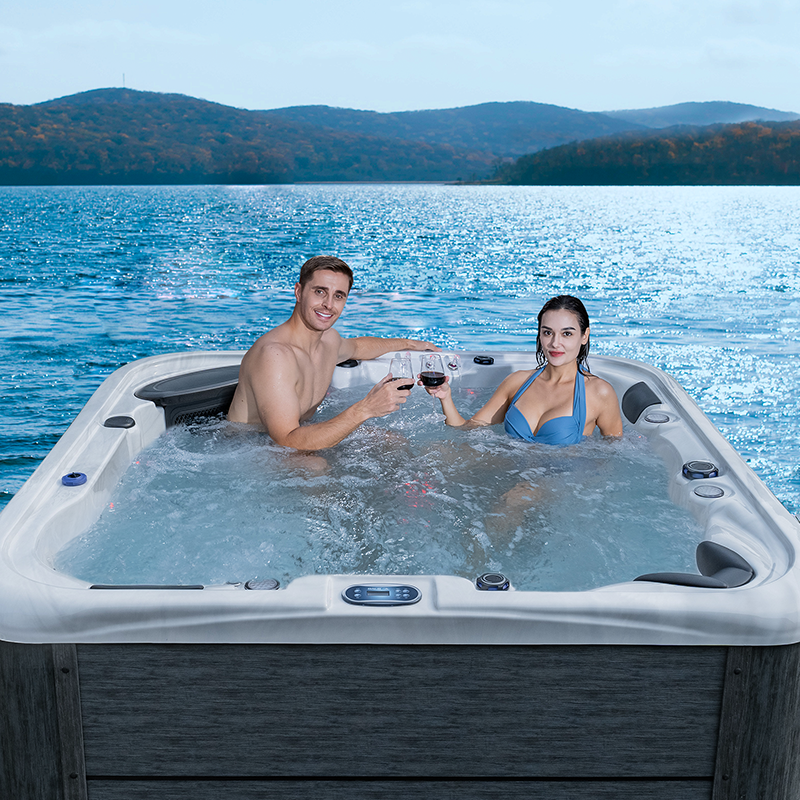
Is Epsom Salts Harmful to Whirlpool Bathtubs?
2024-11-26 15:30In recent years, as people pay more attention to health and relaxation, adding various bath products to baths has become increasingly popular. Among them, Epsom Salts are popular because of their effects of relieving muscle soreness, reducing stress, and promoting sleep. However, for those who use whirlpool bathtubs, whether it is safe to add Epsom Salts to the bathtub has become a question worth discussing. The internal structure of the whirlpool tub is complex, containing systems such as water pumps, nozzles and pipes. Will the use of Epsom Salts cause damage to these equipment? This is a topic of concern to many consumers.
This article will analyze in detail the potential impact of Epsom Salts on whirlpool bathtubs from the aspects of the properties of Epsom Salts, the structure of whirlpool bathtubs and maintenance requirements, and discuss the matters that should be paid attention to when using Epsom Salts.

What is Epsom Salt? What is its function?
Epsom Salt, chemical name Magnesium Sulfate, is an inorganic salt. Because of its granular appearance, similar to edible salt, it is called "Epsom Salt" or "Bath Salt". Adding Epsom salts to the bathtub can release magnesium ions and sulfate ions, which are absorbed through the skin, thereby soothing muscles, relieving pain, and eliminating fatigue. Many people like to add Epsom salts when taking a bath to improve muscle soreness, joint discomfort, and even improve the health of the skin.
Epsom salts are easy to use. Just add an appropriate amount of granules to warm water and dissolve them before taking a bath. It is gentle on the skin, non-irritating, and easily soluble in water. Therefore, Epsom salts, as a natural health product, have been widely used in home bathing. However, the special structure and operating mechanism of whirlpool bathtubs may bring some effects that cannot be ignored.
How does a whirlpool bathtub work?
To understand the potential impact of Epsom salts on whirlpool tubs, you first need to understand how whirlpool bathtubs work. Whirlpool bathtubs are equipped with multiple nozzles, which are driven by a water pump. Through a strong jet of water and air mixed flow, a massage water flow is formed, which acts on various parts of the human body, thereby providing relaxation and massage effects. In order to ensure the normal operation of the massage function, the whirlpool bathtub contains a complex pipe system for circulating water flow.
The proper functioning of a whirlpool bathtub relies on the smooth flow of water pumps and pipes. If the pipes are blocked or the pump is corroded or damaged, the water flow in the bathtub may be blocked or even lose its massage function completely. In addition, since the pumps and pipe systems are usually made of materials such as plastic, rubber, and stainless steel, they are sensitive to chemicals, and certain substances may corrode or damage these materials.

Are Epsom Salts harmful to whirlpool bathtubs?
When Epsom salts dissolve in water, they form a solution containing magnesium and sulfate ions. This solution may have a variety of effects on the pipes and pump systems of whirlpool bathtubs. Here are the potential hazards of Epsom salts to whirlpool bathtubs and factors to consider when using Epsom salts.
Can cause pipe blockage
The pipe system of a whirlpool tub is designed to provide power for water circulation, and its internal space is limited and tortuous. Although Epsom salts are easily soluble in water, under high concentration conditions, the salt particles that are not fully dissolved may adhere to the inner wall of the pipes and accumulate into solid sediment over time. These sediments will cause the patency of the pipes to decrease, the water flow resistance to increase, affect the effect of the massage water flow, and may even cause pipe blockage, resulting in a decrease in the working efficiency of the water pump.
In addition, the solubility of Epsom salts will decrease when the water temperature is low, which also increases the risk of accumulation and blockage inside the pipes. Therefore, if Epsom salts are added to the whirlpool bathtub, it must be ensured that they are fully dissolved, and the bathtub and pipes should be thoroughly cleaned after use to avoid the accumulation of residual salts.
Corrosion of pump and pipe materials
The water pumps, nozzles and pipe systems of whirlpool bathtubs are mostly made of materials such as plastic, rubber and stainless steel. Epsom salt solutions contain magnesium ions and sulfate ions, which may corrode these materials under certain conditions. Especially for some stainless steel water pumps with metal parts, long-term exposure to water environments containing Epsom salts may cause chemical reactions, resulting in corrosion and rust on the metal surface, affecting the performance and service life of the water pump.
Although plastic and rubber materials are highly resistant to chemical corrosion, they may still age, harden, or even crack if exposed to high-concentration Epsom salt solutions for a long time, which may affect the sealing of the whirlpool bathtub and the patency of the pipes. Therefore, the use of Epsom salts may cause potential corrosion damage to the water pump, nozzles, and pipe systems of the whirlpool tub.
Residues are difficult to remove
The solution formed after Epsom salts are dissolved in water has low viscosity and is easily absorbed by the skin, but the mineral components in the solution are easy to leave residues inside the pipes and water pumps. These residues will adhere to the pipe walls and nozzles. As time accumulates, they may affect the smooth flow of the pipes and nozzles and reduce the effect of the massage water flow.
Because the pipe system of the whirlpool bathtub is relatively complex and the internal structure is mostly curved and narrow, it is difficult to completely remove the mineral residues in the pipes with ordinary cleaning methods. This means that if the Epsom salts are not cleaned and maintained in time, the residues in the pipes may continue to accumulate, eventually leading to a decline in the function of the bathtub or damage.
Increased cleaning and maintenance costs
As mentioned earlier, after using Epsom salts in a whirlpool bathtub, thorough cleaning and maintenance are required to prevent salts from accumulating in pipes and water pumps. However, the cleaning and maintenance process of a whirlpool tub is relatively complicated, especially the internal pipe system is not easy to clean directly. Therefore, in order to prevent the potential harm caused by Epsom salts, consumers have to spend more time and energy on cleaning and maintenance.
Some whirlpool bathtubs have automatic cleaning functions, which can alleviate the difficulty of pipe cleaning to a certain extent. However, the automatic cleaning system usually targets ordinary foam and dirt, rather than the mineral residue of dissolved Epsom salts. Therefore, even if the whirlpool bathtub has an automatic cleaning function, manual cleaning is still required to remove the accumulation that may be caused by Epsom salts. This undoubtedly increases the daily maintenance cost of the bathtub.

How to use Epsom salts safely in a whirlpool bathtub?
Although Epsom salts have potential hazards to whirlpool bathtubs, this does not mean that Epsom salts cannot be used in whirlpool tubs at all. The key is to master the correct usage method and take appropriate precautions to minimize the impact of Epsom salts on whirlpool bathtubs.
Control the amount of Epsom salts used
When using Epsom salts in a whirlpool tub, the amount used must be strictly controlled. It is recommended to follow the instructions on the Epsom salt product packaging to avoid overdosing. Generally speaking, using a small amount of Epsom salt can provide sufficient soothing effects while reducing its potential damage to the bathtub pipes and water pumps. Consumers should try to start the water flow system after the Epsom salts are fully dissolved to ensure that the salts do not directly enter the pipes and reduce the risk of blockage and corrosion.
Clean the pipes thoroughly after use
After using Epsom salts, the whirlpool bathtub and pipes should be thoroughly cleaned immediately. After the bath, you can fill the bathtub with clean water, start the massage function, and let the clean water circulate in the pipes for a few minutes to flush out the residual salt and minerals in the pipes. Regularly performing such a cleaning process can effectively reduce the accumulation of Epsom salts inside the pipes and prevent blockage and corrosion.

Choose a special bath salt for a whirlpool bathtub?
There are bath salt products designed for whirlpool tubs on the market. These products have been specially treated in terms of composition and particle size, which are more soluble and less likely to produce residues. When purchasing bath salts, consumers can choose this type of special bath salt to reduce the potential impact of Epsom salts on whirlpool bathtubs. Avoid using coarse-grained bath salts or products containing large amounts of additives as this may damage the bathtub system.
